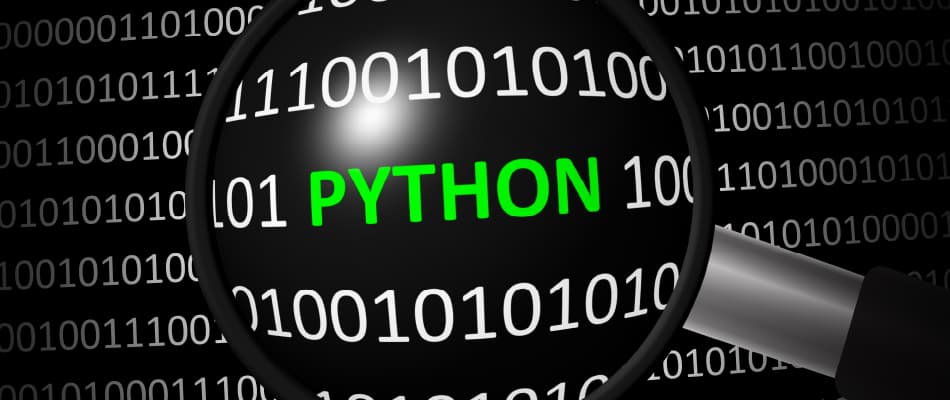Explore Top 40 Questions & Answers for Python Data Science Interview
Data science is a rapidly expanding area, and one of the most commonly used programming languages in this sector is Python. When performing data analysis, machine learning, and big data processing, data at this tool is indispensable because of its huge libraries, ease of use, and versatility. Given the variety of subjects that could be covered, getting ready for a data science interview might be difficult. With concentrated preparation, you can confidently showcase your abilities.
This article has a list of Python data science interview questions and answers. Whether you are just starting your career in Data Science or are an experienced professional, these questions will help you prepare for your next interview and enhance your chances of selection. We cover the field’s most relevant and frequently asked questions, from fundamental concepts to advanced techniques.

Python Interview Questions for Data Science
1). Explain data science and why it is important.
Answer: Data science involves extracting insights and knowledge from data using various techniques. It is used to solve complex problems, make data-driven decisions, and discover patterns that are not immediately apparent. It combines statistical analysis, machine learning, and data visualisation to interpret large datasets. Data science is crucial for strategic planning and operational efficiency in many industries. Its importance lies in its ability to turn raw data into valuable information.
2). Explain the difference between supervised and unsupervised learning.
Answer: In supervised learning, you train models on labelled data where the outcome is known. You use it for tasks like classification and regression. Unsupervised learning, on the other hand, deals with unlabeled data, aiming to find hidden patterns or intrinsic structures. Clustering and association are common unsupervised learning tasks. You leverage both methods depending on whether your data includes known outcomes.
3). What are the key libraries used in Python for data science?
Answer: Some of the key libraries that are frequently used are- Pandas for data manipulation, NumPy for numerical computations, Matplotlib and Seaborn for data visualisation and Scikit-learn for machine learning. Each library serves a specific purpose and provides functions that simplify complex tasks. Pandas help in data wrangling and cleaning, while NumPy is essential for array operations. Matplotlib and Seaborn enable you to create informative visualisations. Scikit-learn offers tools for building and evaluating machine learning models.
4). How do you handle missing data in a dataset?
Answer: To handle missing data, remove records with missing values, impute missing values using statistical methods, or use algorithms that support missing data directly. Removing data is straightforward but can lead to the loss of valuable information. Imputation involves replacing missing values with mean, median, mode, or predicted values. You might also use advanced techniques like K-nearest neighbours (KNN)(i.e using the value of the nearest adjacent element) or regression imputation. Choosing the right method depends on the dataset and the problem at hand.
5). What is the purpose of the Pandas library in Python?
Answer: Pandas provide the data structures and functions needed to manipulate structured data seamlessly. They handle data in various formats, such as CSV files and SQL databases. They allow you to perform operations like filtering, grouping, merging, and reshaping data. Pandas make data manipulation tasks more efficient and straightforward. They’re an essential tool for data preprocessing and exploratory data analysis.
6). Describe the process of data cleaning.
Answer: Data cleaning involves detecting and correcting errors or inconsistencies in data. You perform tasks such as removing duplicates, filling in missing values, and correcting data formats. It ensures that your dataset is accurate and reliable. Data cleaning is a crucial step before any analysis or modelling. A clean dataset leads to more accurate insights and predictions.
7). What is the use of NumPy in data science?
Answer: NumPy is a numerical computation library in Python. It can work with arrays, perform mathematical operations, handle linear algebra, Fourier transforms, and random number generation, and support large, multi-dimensional arrays and matrices. NumPy is known for its high performance and efficiency and is the foundation for many other scientific libraries in Python.
8). Explain the concept of data visualisation and its importance.
Answer: Data visualisation involves representing data graphically. You use it to identify trends, patterns, and outliers, making data analysis more intuitive and actionable. Visualisations help communicate findings to stakeholders effectively. Tools like Matplotlib, Seaborn, and Plotly are commonly used for this purpose. Good visualisations can simplify complex data and highlight key insights.
9). How do you create a bar plot in Matplotlib?
Answer: You can create a bar plot in Matplotlib using the bar() function. You need to specify the categories and their corresponding values. Customisation options allow you to adjust colours, labels, and other aesthetics. Bar plots are useful for comparing categorical data. You can also create horizontal bar plots by using the barh() function.
10). What is the Seaborn library used for?
Answer: Seaborn is a data visualisation library based on Matplotlib. It allows you to create attractive and informative statistical graphics. It provides high-level functions for drawing different types of plots and includes tools for enhancing Matplotlib visualisations. Seaborn’s default styles and colour palettes make it easy to produce visually appealing plots, making it particularly useful for visualising complex datasets.
Read more : Data Science Fundamentals with Python and SQL Specialisation
11). Describe the process of feature selection.
Answer: Feature selection involves selecting the most relevant features for model training. You can use techniques such as correlation analysis, recursive feature elimination, and feature importance from models. Proper feature selection can improve model performance and reduce overfitting. It also helps simplify the model and speed up the training process. You assess the contribution of each feature to determine the best subset.
12). How do you handle categorical data in machine learning?
Answer: You can handle categorical data by encoding it into numerical values. You can use one-hot or label encoding techniques to transform categorical variables. One-hot encoding creates binary columns for each category, while label encoding assigns a unique integer. The choice of encoding method depends on the algorithm you are using. Proper encoding ensures that the model can interpret the categorical variables correctly.
13). What is the difference between logistic regression and linear regression?
Answer: Logistic regression is used for binary classification problems, where you predict probabilities. Whereas linear regression is used to predict continuous outcomes based on input features. Logistic regression outputs a value between 0 and 1, which you can interpret as a probability. Linear regression, on the other hand, fits a line to the data to predict a numeric value. Both are fundamental techniques in predictive modelling.
14). Explain the concept of overfitting and how to prevent it.
Answer: Overfitting occurs when a model learns noise in the training data instead of the underlying pattern. Techniques like cross-validation, regularisation, and pruning can prevent it. Overfitting leads to poor performance on unseen data. Cross-validation helps assess the model’s generalisation ability. Regularisation methods like L1 and L2 penalise large coefficients, while pruning reduces the complexity of decision trees.
15). What is cross-validation, and why is it used?
Answer: Cross-validation evaluates model performance by splitting the data into training and validation sets multiple times. It ensures that the model performs well on unseen data, helps detect overfitting, and provides a more accurate estimate of model performance. The most common method is k-fold cross-validation. It divides the data into k subsets and trains the model k times, each time using a different subset as the validation set.
16). Describe the K-means clustering algorithm.
Answer: K-means clustering groups data points into clusters based on their similarity. You specify the number of clusters, and the algorithm assigns each point to the nearest cluster centroid. It iteratively updates the centroids and reassigns points until convergence. K-means is simple and efficient for large datasets. It’s commonly used for market segmentation, image compression, and anomaly detection.
17). How do you evaluate the performance of a machine-learning model?
Answer: You can evaluate performance using accuracy, precision, recall, F1 score, and ROC-AUC metrics. Each metric provides different insights into the model’s effectiveness. Accuracy measures the overall correctness, while precision and recall focus on positive predictions. The F1 score balances precision and recall. ROC-AUC assesses the trade-off between true positive and false positive rates.
18). What is the purpose of the Scikit-learn library?
Answer: Scikit-learn is a machine-learning library in Python that provides simple and efficient tools for data mining and analysis. It can be used to build and evaluate models, perform data preprocessing, and implement various machine-learning algorithms. It supports tasks like classification, regression, clustering, and dimensionality reduction. Scikit-learn’s consistent API and extensive documentation make it user-friendly and accessible.
19). Explain the concept of a decision tree.
Answer: A decision tree is a model used for classification and regression. You split the data into branches based on feature values, leading to decision nodes and leaf nodes representing outcomes. The tree structure allows you to decide by following paths from the root to the leaf. Decision trees are easy to interpret and visualise. They can handle both numerical and categorical data.
20). What is ensemble learning?
Answer: Ensemble learning combines multiple models to improve performance. You use bagging, boosting, and stacking techniques to create a stronger overall model. Bagging reduces variance by training multiple models on different subsets of data. Boosting reduces bias by sequentially training models on the errors of previous models. Stacking combines the predictions of multiple models using a meta-model.

21). Describe the process of building a random forest model.
Answer: A random forest model consists of multiple decision trees. You build each tree on a random subset of data and features. The final prediction is the majority vote or average of the trees’ predictions. Random forests reduce overfitting and improve accuracy. They are robust to noise and handle large datasets well.
22). How do you tune hyperparameters in a machine-learning model?
Answer: To tune hyperparameters, you can use techniques like grid search, random search, or Bayesian optimisation. Hyperparameters control the learning process and need to be set before training. Grid search exhaustively searches over a specified parameter grid, while random search samples parameter combinations randomly. Bayesian optimisation uses probabilistic models to find the best hyperparameters efficiently.
23). What is the purpose of GridSearchCV in Scikit-learn?
Answer: GridSearchCV performs an exhaustive search over a specified hyperparameter grid to find the best combination. You use it to automate the process of hyperparameter tuning. It splits the data into training and validation sets, evaluates the model for each parameter combination, and selects the best one. GridSearchCV helps improve model performance and avoid manual tuning.
Read More : For a deeper breakdown of the skills interviewers expect, read our guide on Skills To Learn To Become A Data Scientist.
24). Explain the concept of regularisation in machine learning.
Answer: Regularisation adds a penalty to the model’s complexity to prevent overfitting. To shrink model coefficients, you use techniques like L1 (Lasso) and L2 (Ridge) regularisation. L1 regularisation promotes sparsity by setting some coefficients to zero. L2 regularisation prevents large coefficients and improves stability. Regularisation helps in creating simpler and more generalisable models.
25). What is the difference between L1 and L2 regularisation?
Answer: L1 regularisation (Lasso) adds an absolute value penalty to the model’s coefficients, promoting sparsity. L2 regularisation (Ridge) adds a squared penalty, preventing large coefficients. L1 can be used for feature selection, as it sets some coefficients to zero. L2 improves model stability by preventing coefficients from growing too large. Both methods help in reducing overfitting.
26). How do you implement logistic regression in Scikit-learn?
Answer: You can implement logistic regression using the LogisticRegression class in Scikit-learn. You have to fit the model to the training data and use it to make predictions on new data. Logistic regression is used for binary classification tasks. The model outputs probabilities that can be converted to class labels. You can also evaluate its performance using accuracy, precision, and recall metrics.
27). What is the purpose of the ROC curve in model evaluation?
Answer: The ROC curve plots the true positive rate against the false positive rate at various threshold levels. You use it to evaluate the trade-off between sensitivity and specificity. The area under the ROC curve (AUC) provides a single measure of model performance. A higher AUC indicates better performance. The ROC curve helps compare different models and select the best one.
28). Explain the concept of precision and recall.
Answer: Precision is the ratio of true positives to the sum of true and false positives. Recall is the ratio of true positives to the sum of true positives and false negatives. You use precision to measure the accuracy of positive predictions. Recall measures the completeness of positive predictions. Both metrics are important for evaluating classification models, especially in imbalanced datasets.
29). How do you handle imbalanced datasets in machine learning?
Answer: To handle imbalanced datasets, you can use techniques like resampling, synthetic data generation (SMOTE), and performance metrics that account for imbalance (e.g., F1 score). Resampling involves over-sampling the minority class or under-sampling the majority class. SMOTE generates synthetic samples for the minority class. Proper handling of imbalanced data ensures that the model is not biased towards the majority class.
30). What is a confusion matrix?
Answer: A confusion matrix is a table summarising a classification model’s performance. It shows true positives, false positives, and false negatives and provides a detailed breakdown of the model’s predictions. From the confusion matrix, you can calculate metrics like accuracy, precision, recall, and F1 score. It helps understand the types of errors the model makes.
31). Describe the concept of a neural network.
Answer: A neural network is a computational model inspired by the human brain. You use it to learn patterns from data through layers of interconnected nodes (neurons). Each node performs a weighted sum of inputs and passes it through an activation function. Neural networks are used for tasks like image recognition, natural language processing, and time series prediction. They can model complex, non-linear relationships.
32). What is the difference between a convolutional neural network (CNN) and a recurrent neural network (RNN)?
Answer: CNNs are used for image and spatial data analysis, focusing on local patterns. RNNs, such as time series or natural language, are used for sequential data analysis by maintaining context through hidden states. CNNs use convolutional layers to capture spatial hierarchies. RNNs use loops to process sequences of data. Both are specialised architectures for different types of data.
33). How do you implement a neural network in Python?
Answer: You can implement a neural network using libraries like TensorFlow or Keras. You define the network architecture, compile the model, and train it on data. These libraries provide high-level APIs to simplify the process. You specify layers, activation functions, and optimisation algorithms. After training, you can evaluate and fine-tune the model to improve performance.

34). What is the purpose of the activation function in a neural network?
Answer: The activation function introduces non-linearity to the model, allowing it to learn complex patterns. You use functions like ReLU, sigmoid, and tanh. The choice of activation function affects the model’s performance and training process. ReLU is commonly used for hidden layers, while sigmoid and tanh are used for output layers in classification tasks. Non-linear activation functions enable the network to approximate any function.
35). Explain the concept of backpropagation.
Answer: Backpropagation is an algorithm used to train neural networks. You calculate the gradient of the loss function concerning each weight and update the weights to minimise the loss. It involves a forward pass to compute predictions and a backward pass to calculate gradients. The gradients are propagated back through the network using the chain rule. Backpropagation helps in optimising the network to improve performance.
Explore More : Benefits of Learning Online Data Science with Digital Regenesys
36). What is the purpose of dropout in neural networks?
Answer: Dropout is a regularisation technique. During training, you randomly drop units (neurons) to prevent overfitting and improve generalisation. It forces the network to learn more robust features by preventing neuron co-adaptation. Dropout is typically applied during training and turned off during testing. It helps create more generalisable models that perform well on unseen data.
37). How do you evaluate the performance of a neural network?
Answer: To evaluate performance, you need to use metrics like accuracy, loss, precision, recall, and F1 score. You also use validation data to monitor overfitting. Visualisation tools like Tensor Board can help track the training process. Cross-validation can provide a more accurate estimate of performance. Proper evaluation ensures that the model generalises well to new data.
38). What is the use of the TensorFlow library?
Answer: TensorFlow is an open-source library for numerical computation and machine learning. You use it to build and train neural networks and other machine learning models. It provides flexible tools for defining and executing computational graphs. TensorFlow supports high-level APIs like Keras and low-level operations for custom model building. It’s widely used in research and production environments.
39). Explain the concept of transfer learning.
Answer: Transfer learning involves using a pre-trained model on a new, related task. You fine-tune the pre-trained model on your specific dataset to leverage the learned features and improve performance. Transfer learning helps reduce training time and improve accuracy, especially with limited data. It is commonly used in image and natural language processing tasks. It allows you to benefit from the knowledge gained from large, diverse datasets.
40). What are convolutional neural networks (CNNs) used for?
Answer: CNNs are used for image and spatial data. They automatically and adaptively learn spatial hierarchies of features from input images. They consist of convolutional layers that apply filters to capture patterns like edges, textures, and shapes. CNNs are adequate for image classification, object detection, and segmentation. They significantly improve the accuracy and efficiency of image-related applications.
Explore Our Top-Rated Courses
In-Demand Python Data Science Job Profile
The role of Python Data Science has become increasingly vital in today’s data-driven world. Data scientists collect, process, and analyse data to help organisations make informed decisions. They use statistical techniques, the Python programming language, and software tools to interpret complex data sets, identify trends, and generate actionable insights. With the surge in digital transformation across industries, companies are relying heavily on data analysts to guide business strategies and improve operational efficiency.
In addition to technical skills, Python Data Science needs strong communication abilities to present their findings clearly to stakeholders. They often work closely with different departments, including marketing, finance, and operations, to understand their data needs and provide relevant analysis. The demand for skilled data analysts continues to grow, offering numerous opportunities for career advancement and professional development in various sectors, from healthcare and finance to technology and retail.

Why Join Digital Regenesys Data Science Course?
Joining the Digital Regenesys Data Science Course can greatly benefit your career. This course is designed to provide you with a comprehensive understanding of data science principles, practical skills in data analysis, and hands-on experience with industry-leading tools and technologies. By enroing in this course, you will gain the knowledge and confidence needed to excel in the competitive field of data science.
Benefits of the Digital Regenesys Data Science Course:
- You get a Comprehensive Curriculum: Data Science Course Curriculum Covers essential topics like machine learning, data visualisation, and big data analytics.
- Expert Instructors: Learn from experienced professionals and industry experts.
- Hands-on Projects: Real-world projects to build practical skills and a strong portfolio.
- Flexible Learning: Online and self-paced options to fit your schedule.
When preparing for a Python Data Science interview, it is crucial to familiarise yourself with common questions and their answers. These typically cover fundamental topics and other relevant questions. Reviewing these questions and practising your responses will help you demonstrate your technical knowledge, problem-solving abilities, & experience effectively during the interview.
Python Interview Questions for Data Science – FAQs
What is Python, and why is it popular in data science?
Python is a high-level, interpreted programming language known for its simplicity and readability. It is popular in data science because of its extensive libraries and frameworks (like Pandas, NumPy, Matplotlib, and Scikit-learn) that facilitate data manipulation, analysis, visualisation, and machine learning.
Which libraries are essential for data science in Python?
Essential libraries for data science in Python include Pandas for data manipulation, NumPy for numerical operations, Matplotlib and Seaborn for data visualisation, and Scikit-learn for machine learning. These libraries provide a robust toolkit for handling various data science tasks.
How do you handle missing data in Python?
In Python, you handle missing data using the Pandas library. You can remove missing values with dropna(), fill them with fillna(), or use statistical methods to impute values. These functions help maintain data integrity and ensure accurate analysis.
What is the role of Jupyter Notebooks in data science?
Jupyter Notebooks is an open-source web application that allows you to create and share documents containing live code, equations, visualisations, and narrative text. They are widely used in data science for exploratory data analysis, documentation, and presentation of results.
What is machine learning, and how is it implemented in Python?
Machine learning is a branch of artificial intelligence that involves training algorithms to make predictions or decisions based on data. In Python, machine learning is implemented using the Scikit-learn library, which provides a range of algorithms for classification, regression, clustering, and model evaluation.














